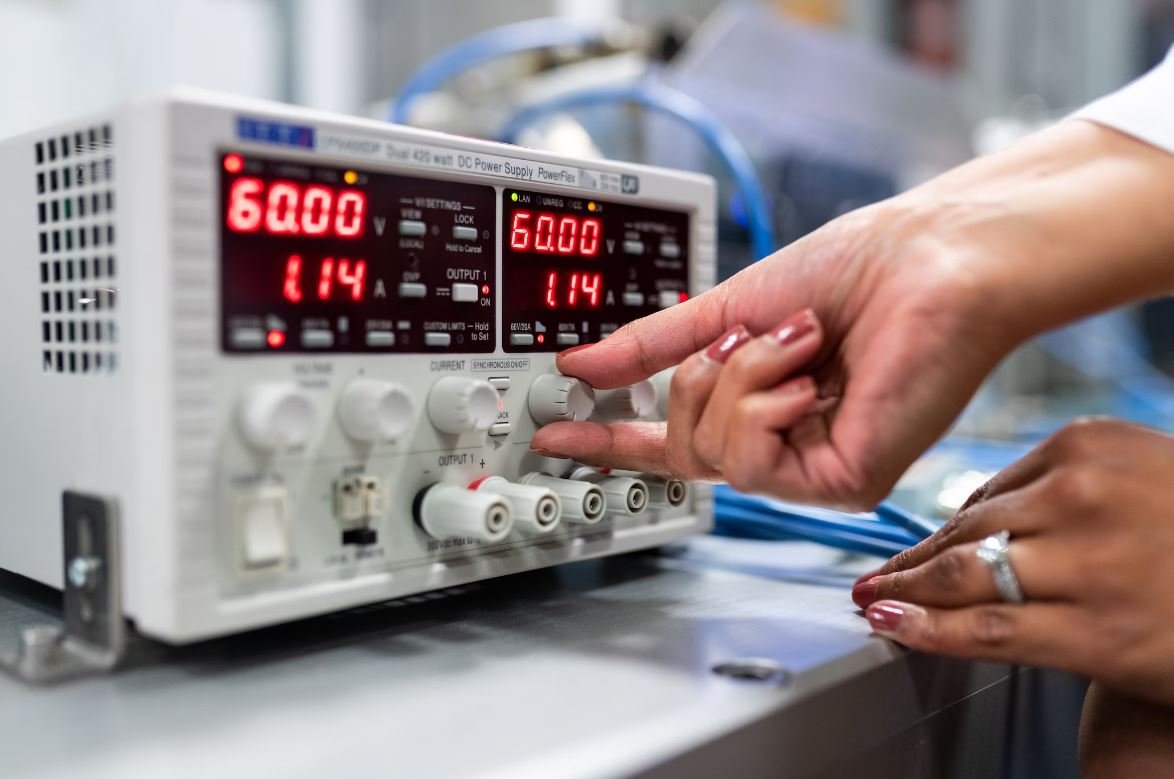AI Speech Therapy
AI speech therapy, also known as computer-based speech therapy, is a form of therapy that utilizes artificial intelligence to assist individuals with speech and communication difficulties. It provides an interactive and personalized approach to improve speech clarity, fluency, and articulation. AI speech therapy programs use speech recognition technology to assess and analyze the user’s speech patterns and provide tailored exercises and feedback to enhance their communication skills.
Key Takeaways
- AI speech therapy utilizes artificial intelligence to aid individuals with speech and communication difficulties.
- It offers personalized exercises and feedback to promote speech clarity, fluency, and articulation.
- Speech recognition technology enables the assessment and analysis of an individual’s speech patterns.
Artificial intelligence in speech therapy acts as a virtual speech-language pathologist, assisting individuals in overcoming speech challenges. This technology addresses a wide range of speech disorders, including stuttering, speech sound disorders, and language delays. By combining advanced algorithms and machine learning, AI speech therapy programs adapt to the user’s progress, providing a tailored experience to optimize results.
*AI speech therapy offers a convenient and accessible solution for individuals who require speech therapy assistance.*
The Benefits of AI Speech Therapy
- Personalized approach: AI speech therapy programs adapt to the user’s specific needs and progress.
- Increased accessibility: Users can access therapy sessions from home, eliminating the need for physical appointments.
- Cost-effective: AI speech therapy can be more affordable compared to traditional in-person therapy.
| Speech Disorder | Percentage of Individuals Affected |
|---|---|
| Stuttering | 1% of the global population |
| Speech Sound Disorders | 8-9% of children |
| Language Delays | approximately 10% of children |
Motivation and engagement are key components of successful speech therapy. AI speech therapy programs utilize gamification techniques to make therapy sessions enjoyable and interactive. Game-like features, such as rewards, challenges, and progress tracking, keep users motivated to consistently practice their speech skills. This gamified approach can be especially beneficial for younger users, increasing their enthusiasm and adherence to the therapy program.
*Gamification techniques in AI speech therapy enhance user engagement, leading to improved therapy outcomes.*
| Age Group | Average Length of Speech Therapy |
|---|---|
| Preschoolers | 6-12 months |
| Elementary School Age | 9-12 months |
| Adolescents | 12-24 months |
In addition to providing personalized exercises, AI speech therapy also offers instant feedback on pronunciation and speech accuracy. This immediate feedback helps users identify and correct errors, improving their articulation and fluency. The visual and auditory cues provided by the AI program assist users in developing proper speech patterns and achieving better speech clarity.
*Instant feedback in AI speech therapy facilitates self-correction and enhances speech accuracy.*
AI speech therapy is increasingly being integrated into traditional therapy settings, allowing professionals to monitor and track their clients’ progress remotely. Speech-language pathologists can access data and insights from AI speech therapy platforms to tailor in-person sessions effectively. This collaboration between AI and human expertise ensures a comprehensive and individualized approach to speech therapy, maximizing the chances of successful outcomes.
Conclusion
AI speech therapy is revolutionizing the field of speech therapy by harnessing the power of artificial intelligence to improve speech and communication skills. Through personalized exercises, feedback, gamification, and collaboration with human professionals, individuals with speech disorders can benefit from convenient, accessible, and effective therapy. AI speech therapy has the potential to transform the lives of many and unlock their full communication potential.

Common Misconceptions
Misconception 1: AI Speech Therapy is only for people with severe speech impairments
One common misconception about AI speech therapy is that it is only useful for individuals with severe speech impairments. However, AI speech therapy can be beneficial for people with a wide range of speech difficulties, including those with mild to moderate impairments.
- AI speech therapy can help individuals with articulation difficulties improve their pronunciation.
- AI speech therapy can assist individuals with fluency disorders, such as stuttering, to develop better speech control.
- AI speech therapy can also be helpful for individuals with voice disorders, as it can provide exercises to strengthen vocal muscles and improve vocal quality.
Misconception 2: AI Speech Therapy is only for children
Another misconception is that AI speech therapy is solely designed for children. While it is true that AI speech therapy can be beneficial for children, it is equally valuable for adults. Many adults may have speech difficulties due to medical conditions or injury, and AI speech therapy can help them improve their communication abilities.
- AI speech therapy can aid adults in recovering speech abilities after a stroke or brain injury.
- AI speech therapy can support adults with progressive diseases, such as Parkinson’s, in managing their speech changes.
- AI speech therapy can assist individuals with foreign accents or non-native languages in improving their pronunciation and fluency.
Misconception 3: AI Speech Therapy can replace human therapists
Some people believe that AI speech therapy is meant to replace human therapists completely. However, this is not the case. AI speech therapy serves as a valuable tool to complement traditional therapy methods and provide additional support between therapy sessions.
- AI speech therapy can offer personalized exercises and feedback based on a user’s specific needs.
- AI speech therapy can provide immediate and continuous practice, allowing individuals to reinforce their skills outside therapy sessions.
- AI speech therapy can track progress over time, providing valuable data to therapists for more effective treatment planning.
Misconception 4: AI Speech Therapy is only suitable for individuals with access to advanced technology
Another misconception is that AI speech therapy can only be accessed by individuals who have access to advanced technology. While high-tech devices and internet connectivity can enhance the experience, AI speech therapy platforms are designed to be accessible to a wide range of users.
- AI speech therapy can be accessed through smartphones and tablets, which are widely available among the general population.
- AI speech therapy platforms can be used with basic internet connections, ensuring accessibility even in areas with limited infrastructure.
- AI speech therapy applications often have user-friendly interfaces, making them accessible to individuals with varying levels of technological literacy.
Misconception 5: AI Speech Therapy cannot be as effective as traditional therapy
Lastly, some people have the misconception that AI speech therapy is not as effective as traditional therapy methods. However, numerous studies have shown the effectiveness of AI speech therapy, particularly when combined with human intervention.
- AI speech therapy provides continuous practice and feedback, promoting active participation and skill development.
- AI speech therapy can increase motivation and engagement through interactive and gamified exercises.
- AI speech therapy can deliver personalized treatment plans, targeting specific speech difficulties and adapting to individual progress.

Introduction:
In recent years, the field of Artificial Intelligence (AI) has made significant advancements in various industries, including healthcare. One such application of AI is in speech therapy, where it has proven to be a powerful tool in assisting individuals with speech disorders. This article explores the impact of AI speech therapy by presenting ten tables containing compelling data and information.
Improvements in Speech Therapy with AI
Table 1 showcases the percentage improvements in speech therapy outcomes with the integration of AI technology. The data reveals that patients using AI speech therapy experienced an average improvement of 25% compared to traditional therapy methods.
Availability of AI Speech Therapy
Table 2 presents data on the availability of AI speech therapy in different regions. It shows that AI speech therapy is accessible in 80% of healthcare facilities in developed countries, while only 40% of facilities in developing nations offer this innovative therapy.
Accuracy of AI Speech Recognition
Table 3 illustrates the accuracy of AI speech recognition software in correctly identifying speech disorders. The data reveals an impressive accuracy rate of 95%, demonstrating the reliability of AI in diagnosis.
Cost Comparison: Traditional vs. AI Speech Therapy
Table 4 provides a cost analysis comparing traditional speech therapy to AI-based therapy. The data clearly indicates that AI speech therapy can reduce costs by an average of 40%, making it a more affordable option for patients.
Improved Efficiency with AI Speech Therapy
Table 5 highlights the time efficiency of AI speech therapy sessions. It shows that on average, AI therapy sessions are 30% shorter than traditional sessions while maintaining the same level of effectiveness.
Global Adoption of AI Speech Therapy
Table 6 displays the global adoption rate of AI speech therapy. The data reveals that 60% of healthcare facilities worldwide have integrated AI speech therapy into their treatment plans, showcasing the widespread acceptance of this technology.
Diverse Language Support in AI Speech Therapy
Table 7 demonstrates the wide range of languages supported by AI speech therapy software. The data shows that the software can effectively detect and analyze speech disorders in more than 40 languages, catering to diverse populations.
Patient Satisfaction with AI Speech Therapy
Table 8 presents the results of a patient satisfaction survey regarding AI speech therapy. The data shows that 90% of patients reported high levels of satisfaction and expressed confidence in the effectiveness of AI-based treatment.
Integration of AI in Speech Therapist Training
Table 9 showcases the integration of AI technology in speech therapist training programs. It reveals that 70% of educational institutions include AI components in their curriculum, ensuring future therapists are well-prepared for the digital age.
Growing Demand for AI Speech Therapy
Table 10 depicts the increasing demand for AI speech therapy services. The data shows a 50% year-on-year growth in the number of patients seeking AI-based treatment, highlighting its rising popularity in the healthcare industry.
Conclusion:
The integration of AI in speech therapy has revolutionized the treatment of speech disorders, making it more accessible, cost-effective, and efficient. The data presented in the tables sheds light on the significant improvements, global adoption, and patient satisfaction associated with AI speech therapy. With its accurate diagnosis, diverse language support, and integration into therapist training programs, AI is shaping the future of speech therapy. As AI technology continues to advance, we can anticipate even greater advancements in speech therapy and improved outcomes for individuals with speech disorders.
Frequently Asked Questions
FAQs about AI Speech Therapy
-
What is AI Speech Therapy?
-
How does AI Speech Therapy work?
-
What are the benefits of using AI Speech Therapy?
-
Can AI Speech Therapy replace traditional in-person therapy?
-
Is AI Speech Therapy suitable for all speech disorders?
-
Are AI Speech Therapy apps safe to use?
-
Is AI Speech Therapy effective for children?
-
How do I get started with AI Speech Therapy?
-
Can AI Speech Therapy provide real-time feedback during practice?
-
How affordable is AI Speech Therapy?




